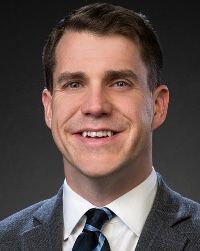CDC Spreads Fight Against Antibiotic Overprescribing Over the World
CDC’s Michael Craig: “Every country is an importer and an exporter of resistance…. And our hope is that this could be a jumpstart to help some of these countries start to build the capacity that is needed everywhere.”
The Centers for Disease Control and Prevention (CDC) has gone global in its fight against the overprescribing of antibiotics. On Tuesday, the agency announced the launch of 2 new programs. The Global Action in Healthcare Network (GAIHN) forms alliances of countries, health care facilities, and public health partners that would ideally prevent, detect, and respond to infectious disease threats in health care settings. The Global AR [antibiotic resistance] Laboratory and Response Network’s focus will be improving the detection of existing and emerging AR threats.
Michael Craig, the director of the CDC’s Antibiotic Resistance Coordination and Strategy, runs both programs. “The two networks are really an outgrowth of what we’ve supported here in the United States, in our domestic air lab network,” Craig tells ICT®.
Michael Craig

The CDC’s global effort to reduce antibiotic overprescribing is not a reaction to the COVID-19 pandemic; the programs where being developed beforehand.
“I would say for both networks, though, the pandemic really reiterated and clearly demonstrated the importance for acting globally for some of these infectious disease threats,” says Craig.
Would it have made a difference if the programs were in place during the pandemic?
“I don’t know that the pandemic would have played out in a different way,” Craig said. “But I think these programs potentially would have contributed to greater capacity within a country to be able to detect what’s going on, and to be able to respond to it.”
The programs cost $22 million and are up and running. The money was distributed to about 30 different health care partners in about 50 countries. In an atmosphere where politicians in Washington, D.C., casually discuss the spending of billions, and even trillions, of dollars, is $22 enough?
Craig considers the $22 million allotment seed money that will hopefully draw more funding, depending on how well the initial effort goes.
“There’s a lot of work that needs to be done everywhere,” says Craig. “Every country is an importer and an exporter of resistance. And really, every country needs to do more. And our hope is that this could be a jumpstart to help some of these countries start to build the capacity that is needed everywhere.”
The programs work closely with the World Health Organization and the Pan American Health Organization. “Both of these networks are to a certain extent funding some of the work that we’re doing,” says Craig.
The effort isn’t limited to health care settings. Craig said that it could extend into communities through, for instance, efforts to enhance vaccination uptake.
“The challenge that we face in a lot of parts of the world, when it comes to antimicrobial resistance, is that we know that there’s a problem, but we don’t know the scale or scope of that problem,” says Craig. “That’s what we have to figure out first.”
Is the pathogen confined to health care settings? Is it related to food? Is it related to community issues—the social determinants of health? All questions that need to be answered.
“That will help us tailor the interventions.”
The programs would identify emerging forms of resistance, “scary forms of resistance that are a threat to health care workers and patients,” says Craig. “And then once those are detected, tie them with a prevention or intervention. And that could be improvement of antibiotic use practices. It could be containment practices, and better infection control practices.”
CDC officials see antimicrobial stewardship as crucial.
The overprescribing of antibiotics points to a future where those antibiotics no longer work to ward off diseases and conditions that they have historically been able to contain. As Arjun Srinivasan, MD, the CDC’s associate director for Healthcare-Associated Infection Prevention Programs, told Infection Control Today® in March, programs that try to reduce antibiotic overprescribing need infection preventionists. “There’s a lot of potential for synergy between the infection prevention program and the antibiotic stewardship program,” Srinivasan said.
That’s a point that Heather Saunders, MPH, RN, CIC, reiterated in an article in ICT®’s September issue. “With seemingly reckless abandon, we are quickly headed toward an era in which the antibiotics we once used to treat infection will be rendered ineffective,” Saunders wrote.
Candida auris and Mucormycetes are 2 pathogens that seem to have taken advantage of all the attention that’s been paid to COVID-19 in the last 2 years. Both spread easily and can kill. These are the types of pathogens that concern Craig. Candida auris is relatively new, being first reported in Japan in 2009. Mucormycetes is not new, but its rapid spread during a COVID-19 surge in India caught health care systems off-guard.
About C auris, Craig says that “it was really nowhere to be found, and then in a short period of time has circumnavigated the globe and causes very high mortality in patients that are affected by it, especially in health care settings.”
He adds: “This is a pathogen that I think is really emblematic of why we’re launching these networks.”